How do Maine Coon kittens grow by months?
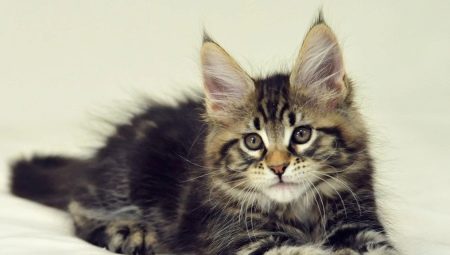
Maine Coons are graceful, affectionate giants in the feline world. You need to buy a kitten at four months, it is at this age that all breed defects and health problems, if any, become visible. Provided the proper maintenance and nutrition, the kitten can grow into a champion and an enviable producer.
Breed standards
The standards were introduced to control the breeding work of breeders, since the purity of the breed can only be preserved if the parents meet the criteria for purebred in all key parameters.
The Maine Coon breed has the following strict standards:
- the size of cats and cats should be significantly different (males are larger);
- the body is large with a wide chest;
- paws are muscular and round, tufts of hair between the toes;
- wide tail reaches the shoulder;
- the hair on the tail is streaming;
- the skull is large, square;
- the profile of the muzzle is curved;
- the eyes are large, slightly slanted, set wide apart;
- eye color harmonious with coat color;
- ears wide at the base, tapering to the tips with tassels and abundant edging, close-set;
- the coat is dense, waterproof, has different lengths (longer on the belly and hind legs);
- undercoat without main hair on the belly and “pants”;
- the mane is optional, but adds points for the overall appearance of the animal.
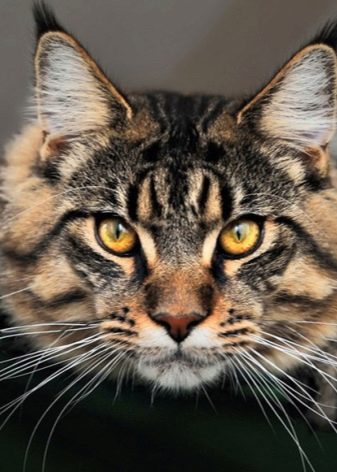
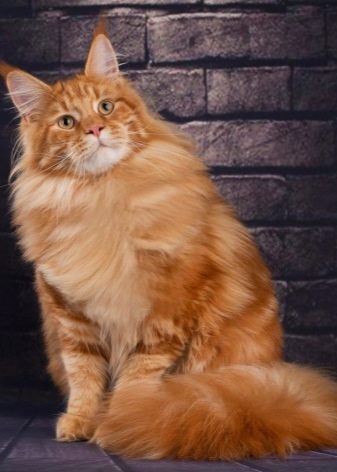
Individuals of Maine Coon grow up to the age of three years, but after the first year of life they already look adults, weight gain and growth slow down noticeably, sometimes leaps in development can be observed.Participation in exhibitions is allowed from the age of three months, but the awarding of titles starts from ten months.
There are three assessment systems for this breed.
- WCF (Russia) - the animal is examined at an open exhibition in the presence of the owner. One grade is given in one day. Evaluation criteria: the body that meets the standard is evaluated at 35 points, the head - 40 points, the color and quality of the coat - 25 points, the color of the eyes - 5 points, the general appearance - 5 points. Disqualified for hybrid colors: chocolate, purple, Siamese, and so on, as well as for long belly hair.

- TICA (America) - the animal is considered in a stretch. There is a system of penalties for a short tail, slanting wide eyes, a narrow chin, flame-shaped ears, a narrow body and sparse hair. Disqualification is provided for aggressive behavior of the animal, wrinkles on the tail, blindness, narrow body. Assessments: head - 40 points, body - 35 points, hair on a set of parameters - 25 points.
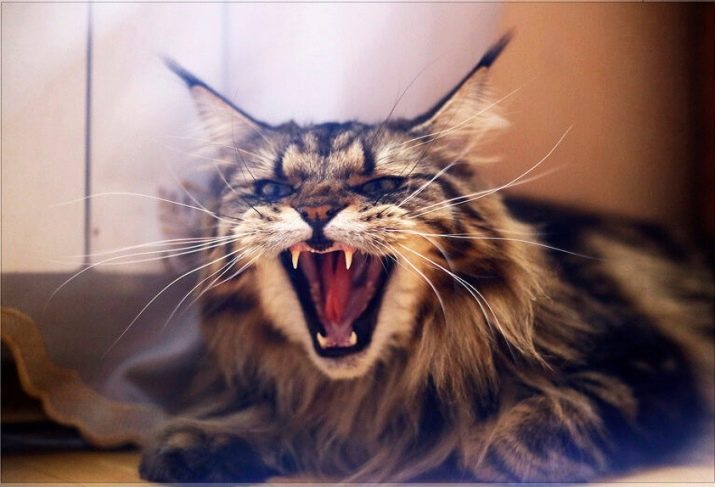
- FIFe (France) - clean color of eyes, powerful neck in cats is welcomed, seasonal molting is taken into account. Disqualification based on WCF and TICA systems. Grades: head - 40 points, body - 35 points, coat - 20 points, general condition - 5 points.
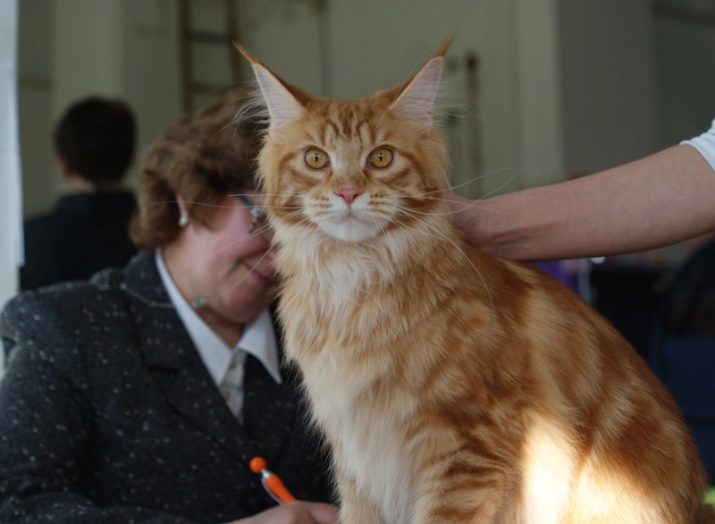
All systems of standards for evaluating Maine Coons are unified in the criteria for origin and temperament: parents must be titled, the character is friendly and balanced.
If the kitten meets the standards, it will be successful at all kinds of exhibitions.
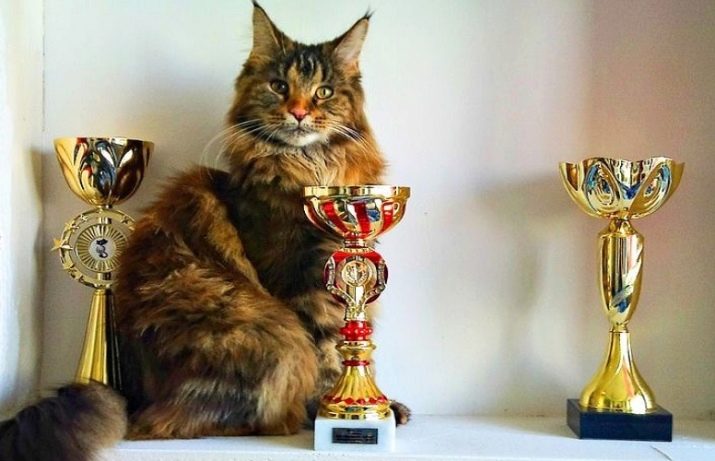
What affects growth?
The large size of the representatives of this breed puts a lot of stress on the spine, and too fast growth has a bad effect on the formation of joints.
The following factors affect the growth of Maine Coon kittens:
- gender of the newborn - boys are born larger and grow faster than girls;
- the weight and height of the mother cat - the larger it is, the larger the offspring are born;
- health status - weak kittens grow more slowly and gain weight worse;
- number of individuals in the litter - the larger the number, the smaller the newborns;
- heredity - paternal genes also affect the growth and development of kittens, if the male is relatively small, then the offspring will be medium-sized;
- feeding a lactating cat - lack of nutrients and vitamins will negatively affect the growth of kittens;
- stress - construction noise, loud music, the presence of other cats or dogs in the room - all this badly affects both the cat and the kittens; It is not uncommon for a female to stop feeding her offspring after a stressful situation and the kittens lagged significantly behind in gaining weight on artificial feeding.
It is recommended for the first year to keep a diary of the weight and height of Maine Coon kittens (preferably using an electronic scale) in order to timely detect deviations in development, if any.

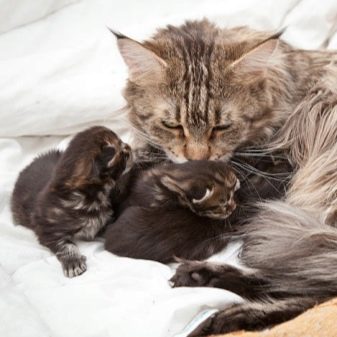
Kitten development by month
Kittens are born weighing about 100-130 grams. The more kittens there are in a litter, the less each one weighs. Girls lag behind boys in weight by 20 grams, but should steadily gain weight. Stronger large cats give birth to stronger offspring. Strong and healthy kittens grow faster than weakened ones. By the age of four months, boys begin to grow faster than girls and add more weight.
Kittens must be kept clean, protected from stress and changes in ambient temperature, then they will develop and grow harmoniously and rather quickly. A lambing Maine Coon female needs to be fed in a varied and balanced way at least 4 times a day. Introduce complementary foods into the diet of kittens should be gradual, the first days a new product should be given 1/5 teaspoon, bringing the volume to two tablespoons by the end of the week.
The development of Maine Coon kittens by month is as follows.
- First month Normal weight gain of a kitten is considered to be 10 grams daily (except for the first 3-5 days, when the kitten is recovering from the stress received during childbirth). By the end of the first month of life, the weight of a healthy kitten increases approximately fourfold (girls about 600 g, boys about 800 g), weak monthly kittens approach in all respects to their strong brothers. Kittens feed exclusively on mother's milk during this period.
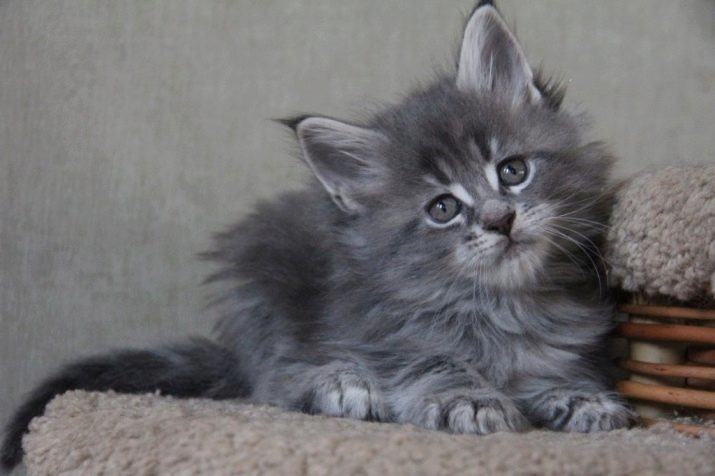
- Second month ends with an increase in weight 8 times compared with newborns: two-month-old cats grow up to 1300 grams, cats - 1600 grams. Complementary foods are added to the mother's milk once a day, scraped scalded meat on the tip of a teaspoon for each kitten.

- In the third month in addition to mother's milk and scraped meat, you can add to the baby's diet baby turkey puree, the weight of cats by this time reaches 2400 grams, cats - 3600 grams.
Three month old kittens can be gradually weaned from their mother's milk.
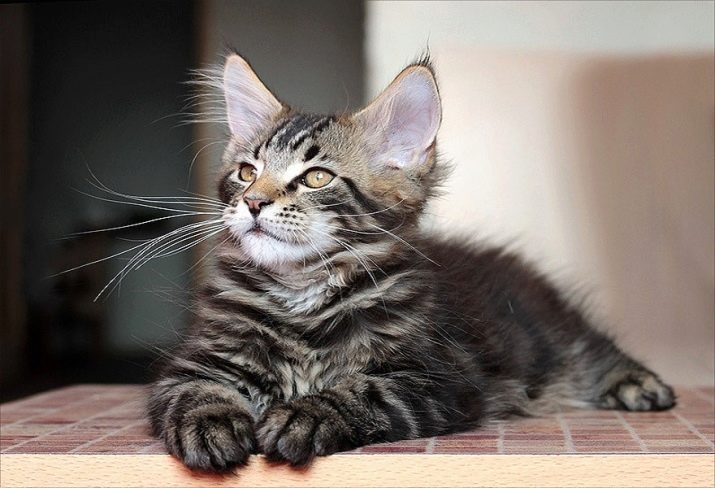
- In the fourth month special milk for kittens and liquid cereals are added. Kittens master the litter box well. At this age, kittens are sold and they change their place of residence, which can slow down their height and weight. A cat at this time should weigh about 3500 grams, a four-month-old cat should weigh about 3800 grams.

- Fifth month Is the maximum weight gain. The diet remains the same. Growth slows down somewhat. The teenage phase begins. Girls at this age have a weight of 4200 grams, boys - 5500 grams.
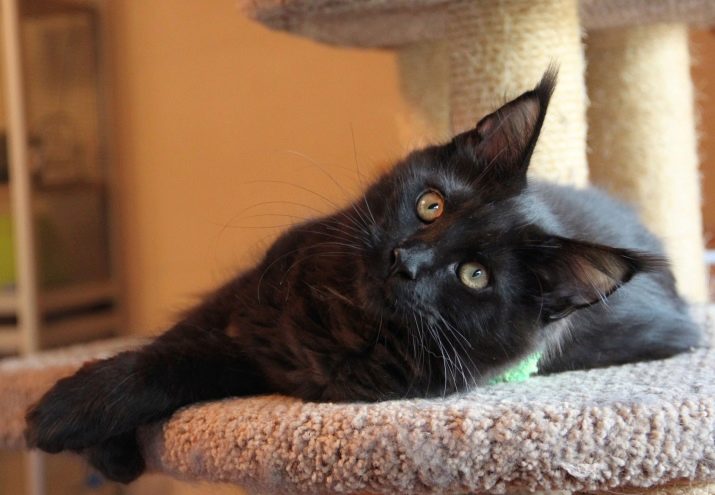
- Sixth month - the time of sterilization (if necessary), the kitten must first be examined by a veterinarian. The diet of Maine Coon individuals remains unchanged. Girls gain up to 4300 grams, boys - about 5100 grams.
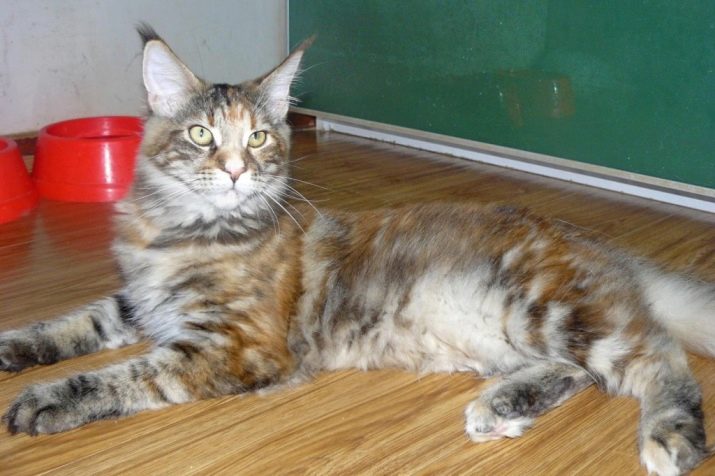
- Seventh month low-fat cottage cheese is added to the diet, sour cream is 15%. At the age of seven months, kittens' teeth are fully formed. Cats weigh about 4600 grams, and cats weigh 6500 grams.
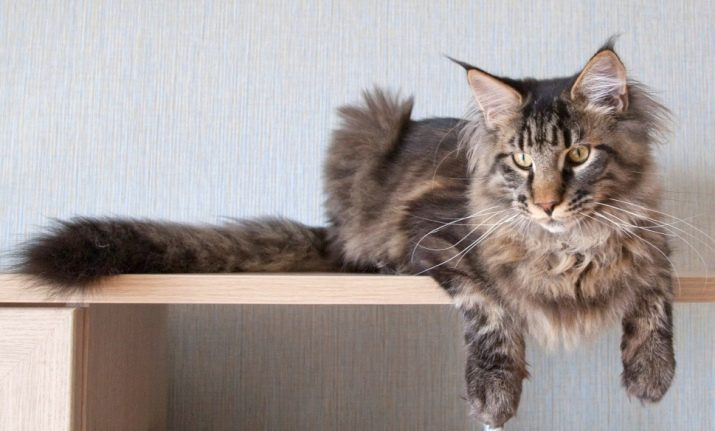
- Eighth month - time to introduce boiled egg yolk into the diet. Girls gain weight up to 5000 g, boys add about 0.5 kg in weight and become 6.9 kg.
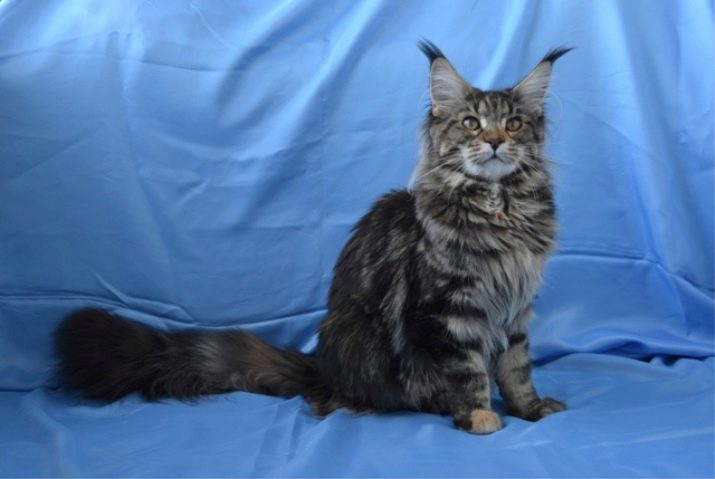
- On the ninth month the diet can be expanded: add vegetables. The weight of girls becomes about 5200 g, boys - about 7 kg.
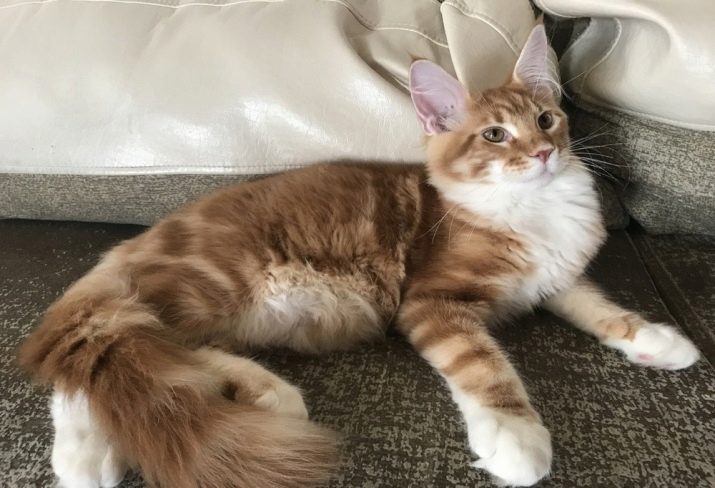
- On the tenth month you can add low-fat boiled sea fish to the Maine Coon menu. Weight of girls - 5500 g, boys - 7700 g.
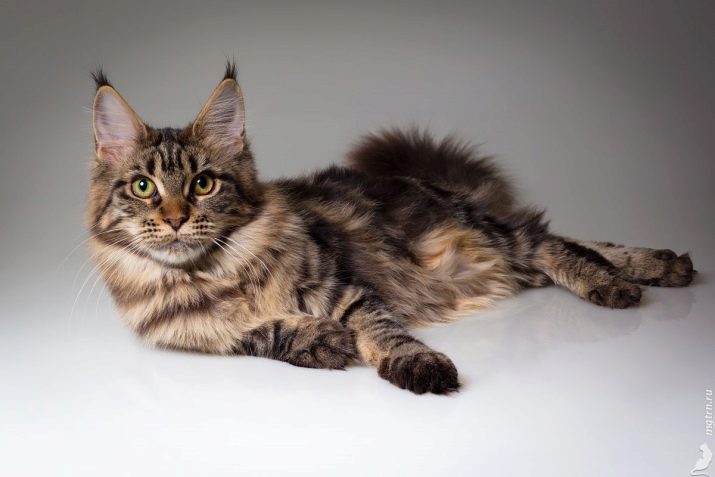
- Eleventh month - the diet remains the same. Females gain weight about 6100 g, males - about 7200 g.

- By the year the diet is preserved.Girls weigh 6500 g, boys 9 kg.
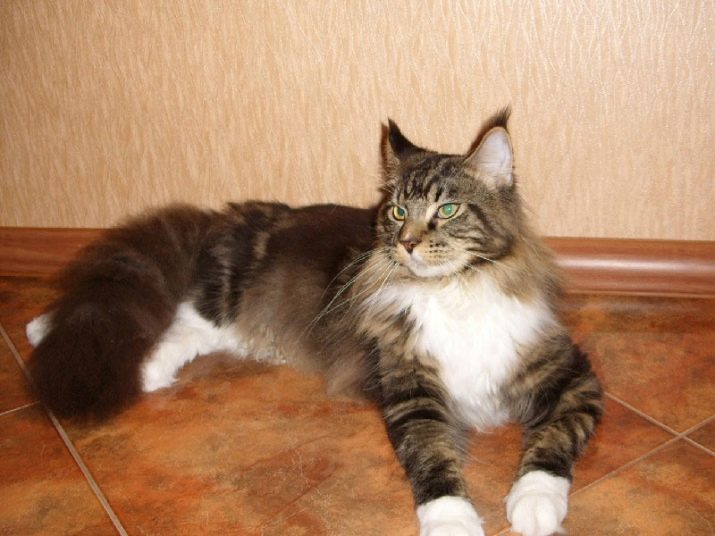
The average weight of an adult Maine Coon male is about 10 kg. Do not overfeed the animal in pursuit of increasing mass - this will cause irreparable harm to the health of the pet and significantly reduce its life expectancy.
What if the cat is not gaining weight?
The diet of Maine Coon kittens should be balanced and varied, contribute to normal growth, weight gain within the normal range, and also contain vitamins and minerals. Excess weight negatively affects the cardiovascular system, hormones and joints of the animal.
Weight gain also depends on the period of development of the kitten, namely:
- neonotal - this is the first 4 days from birth, at this time kittens lose weight;
- sucking - the first month of life, there is a stable weight gain of about 30 grams daily;
- transition - this is the second month after birth, some weight loss occurs with the introduction of complementary foods;
- post-suction - the time of complete transition to a separate diet without breast milk, the first 5–7 days of this period, growth and weight gain may be inhibited, but after the first week the indicators stabilize.

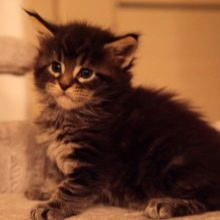

If a kitten is not gaining weight well, in no case should it be fed with sausage, cow's milk and pork - these products will not help to increase weight, but will undermine the pet's health.
Maine Coons, like all purebred cats, need constant supervision by a professional veterinarian, which allows you to timely identify health problems and cure the animal (you should visit the doctor at least 2 times a year). Kittens of this breed are very active and cheerful, often energy is consumed faster than accumulated. A noticeable increase in weight begins as you grow older, after some decrease in activity.
The largest among adults are castrated males, but their weight should not exceed 11-12 kg... If the animal weighs more, this indicates obvious health problems. Maine Coons look giants due to their considerable growth and fluffy coat with a thick undercoat.
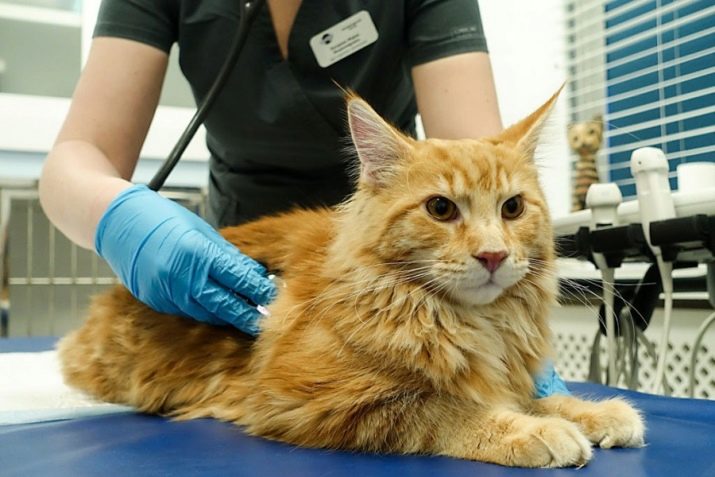
Read more about Maine Coon kittens in the next video.
































